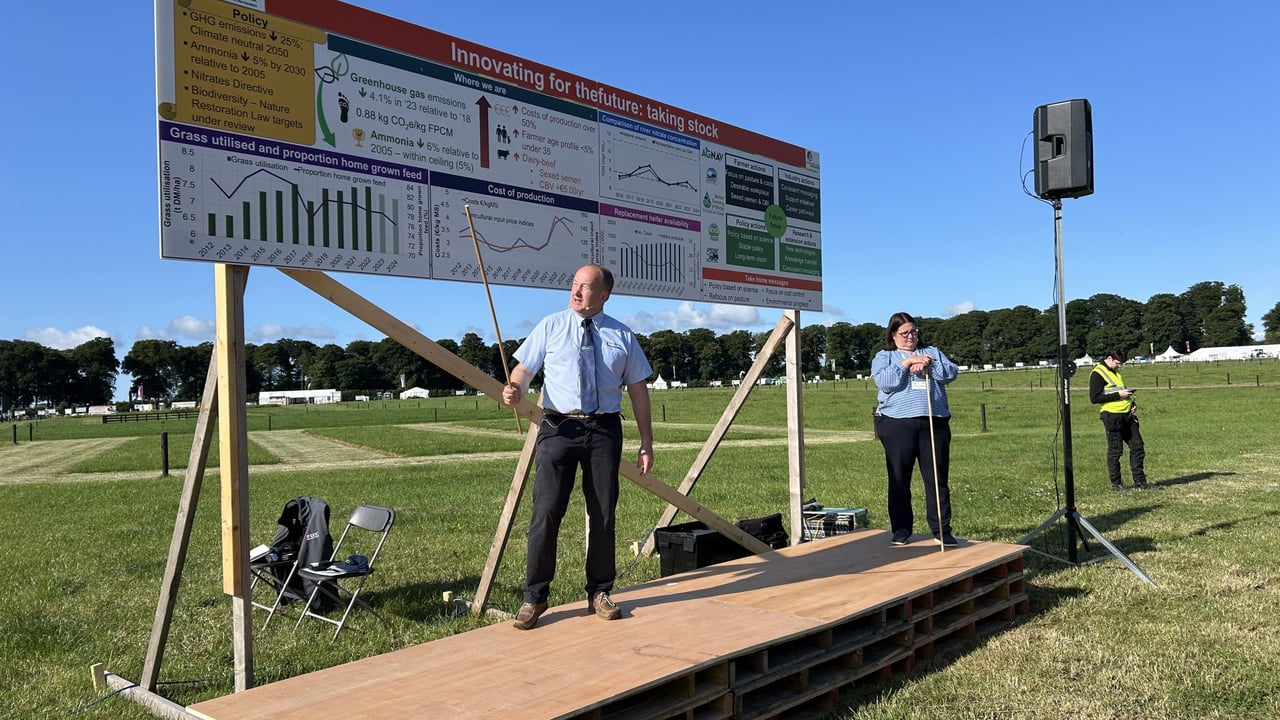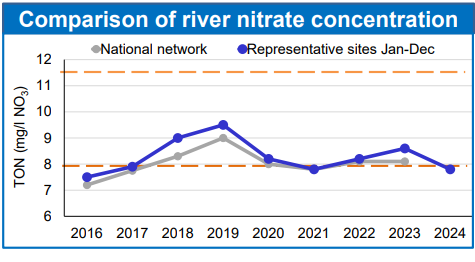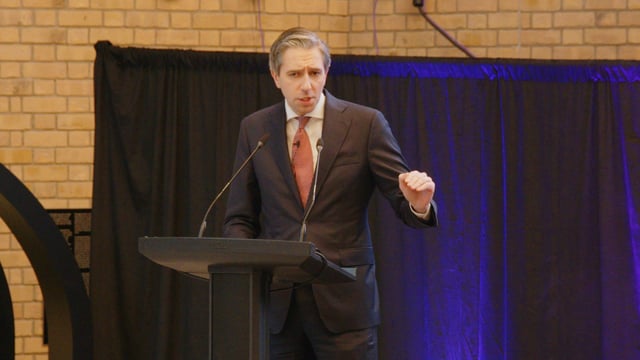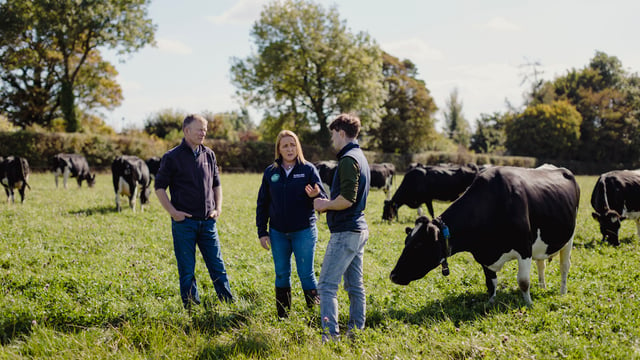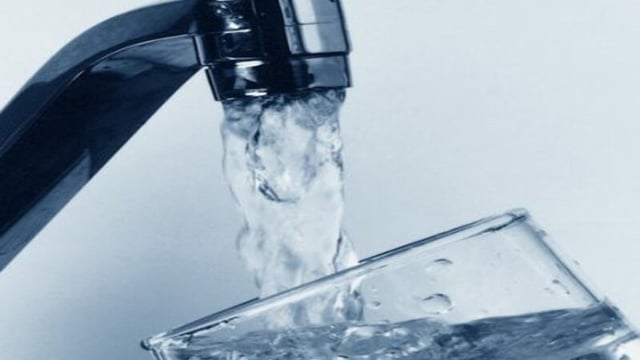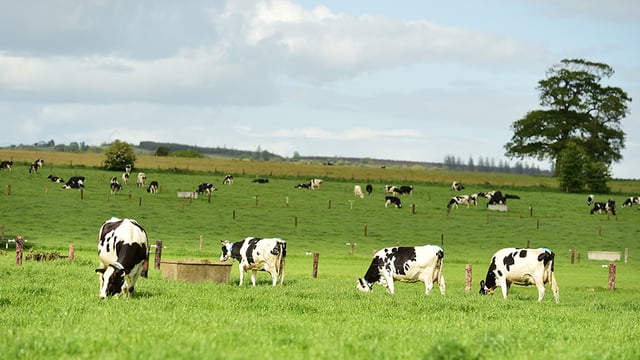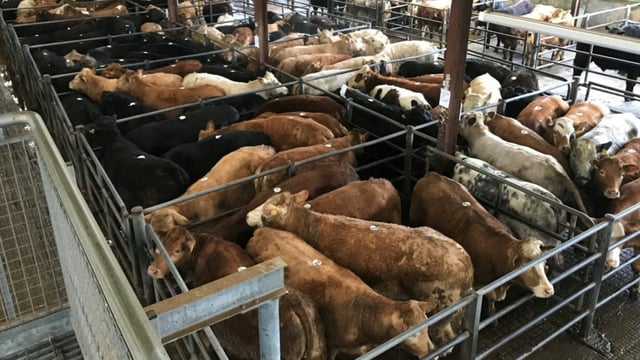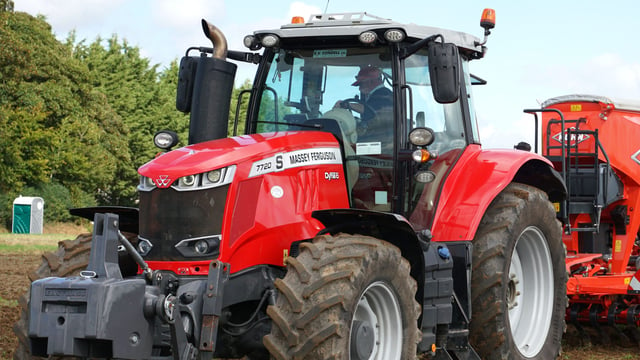Moorepark '25: Taking stock and 'innovating for the future'
Research underway to address the key challenges currently faced by the Irish dairy sector is a key feature of the Teagasc Dairy Open Day in Moorepark, which is taking place in Fermoy today (Wednesday, July 2).
The first board at the Teagasc Moorepark Dairy Open Day - 'Innovating for the future: Taking stock' - saw Professor Laurence Shalloo, head of the Animal and Grassland, Research and Innovation programme in Teagasc, discuss in detail where the industry currently is and where it needs to be.
A few of the concerns that dominated today were the direction of policy in regards to greenhouse gas (GHG) and ammonia emissions, water quality and the Nitrates Directive, and biodiversity.
Prof. Shalloo highlighted that costs per unit of milk have increased by over 50% between 2020 and 2024 and less than 5% of the farmer age profile is under 35 years-of-age.
Prof. Shalloo also outlined that in order for the industry to build resilience, farmers must reduce their reliance on external inputs, cut down their costs of production through utilising more grass and the proportion of home grown feed in the cow's diet.
The breeding strategy on farms was also pinpointed as a key aspect to reducing costs and maximising profitability through the use of sexed semen and utilising the Economic Breeding Index (EBI) while maximising your crop of dairy-beef calves through the dairy beef index (DBI).
The number of replacement heifers born on Irish dairy farms was highlighted as a concern for Prof. Shalloo, as he said the number of heifers born relative to the number of cows is not sustainable as farmers are cutting their replacement rates too tight.
Innovating
It was highlighted again at the Teagasc Dairy Open Day in Moorepark that agriculture must reduce GHG emissions by 25% by 2030, relative to 2018 and recent research has shown that enteric methane production has been overestimated.
The carbon (C) footprints of Ireland’s pasture-based dairy and beef systems are amongst the lowest globally, with recent figures showing Irish dairy at 0.88 kg carbon dioxide equivalent (CO2e)/kg fat and protein corrected milk yield (FPCM) using the most recent enteric methane emission factors.
Research also suggests that further reductions are possible, with targets set at 0.63 kg CO2e/kg FPCM for technically efficient farmers and potentially close to 0.50 kg CO2e/kg FPCM when C sequestration is included in the calculations.
Prof. Shalloo believes that technology adoption and farm-level changes are key to emissions reductions at present, while the industry is concurrently investing in research to develop new solutions for increased emission reductions.
The national agricultural emissions declined in 2023 by 4.8% relative to 2022 and 4.1% relative to 2018 and are expected to have declined again in 2024.
The early indications for nitrate concentrations in water in 2024 are showing signs of improvement with the EPA’s most recent “Early Insights Indicator report”.
Although evidence suggests declines in nitrate in waterways, the south and south-east are still too high and need to show "signs of drastic improvement to fight our case effectively to retain the nitrates derogation".
Prof. Shalloo highlighted that these changes are driven by policy changes under the Nitrates Directive, reduced fertiliser nitrogen (N) use at farm level, a greater focus on nutrient use efficiency, weather and nutrient management at farm level.
He has stressed that these improvements need to continue and are underpinned by campaigns such as Teagasc’s Better Farming for Water, AgNav, and other water quality improvement campaigns.
Teagasc will shortly publish findings that will show that the average dairy cow in Ireland is producing approximately 20% more manure per week while housed than has been currently assumed.
Prof. Shalloo highlighted that this will result in a requirement to increase investment in manure storage on many farms and will result in the potential to yield greater returns from the nutrients in the manure.
In recent years, the increased use of abatement technologies such as protected urea, low emission slurry spreading (LESS) and reduced crude protein percentages in animal feed diets has meant that Irelands emissions in 2023 were 4.2% below 2022.
With national ammonia emissions consistently reducing since 2018, this progress brings Ireland into compliance with European Union (EU) ammonia emission reduction targets.
Taking stock
Among the key messages to farmers today from the first board was the need to focus on pasture management and grass utilised in the cow's diet while minimising costs to maximise production and profitability into the future.
Farmers were also advised to make their farm a desirable workplace in order to encourage relief milkers, and entice the next generation into farming.
There was also emphasis that greater efforts are required by the industry to demonstrate the types of opportunities for jobs and careers that are available on dairy farms, and the levels of work-life balance that can be achieved while remaining highly efficient.
It was also demonstrated that sexed semen use has risen from under 50,000 straws pre-2020 to over 350,000 in 2025, reducing male dairy calf numbers by up to 150,000 and that farmers should continue their focus on sexed semen while utilising the DBI.
Consistent messaging, support iniatives and career pathways into farming need to be the focus for the industry in the coming years according to Teagasc.
There was also a strong message today that Ireland needs to ensure that policy is orchestrated based on on science and stable policy formed with a long-term vision, as farmers need to be able to invest and plan for the future ahead, with certainty.
In terms of research and extensive actions, Teagasc has highlighted that new technologies and knowledge transfer with consistent messaging need to be a the forefront of Irish dairy farming going into the future.
Meanwhile Teagasc's Deirdre Hennessy also highlighted that "the level of homegrown feed and pasture needs to increase and the age profile of farmers needs to improve".
"We need an attractive clear career pathway" for the next generation and "policy needs to be implemented based on good science," she added.

